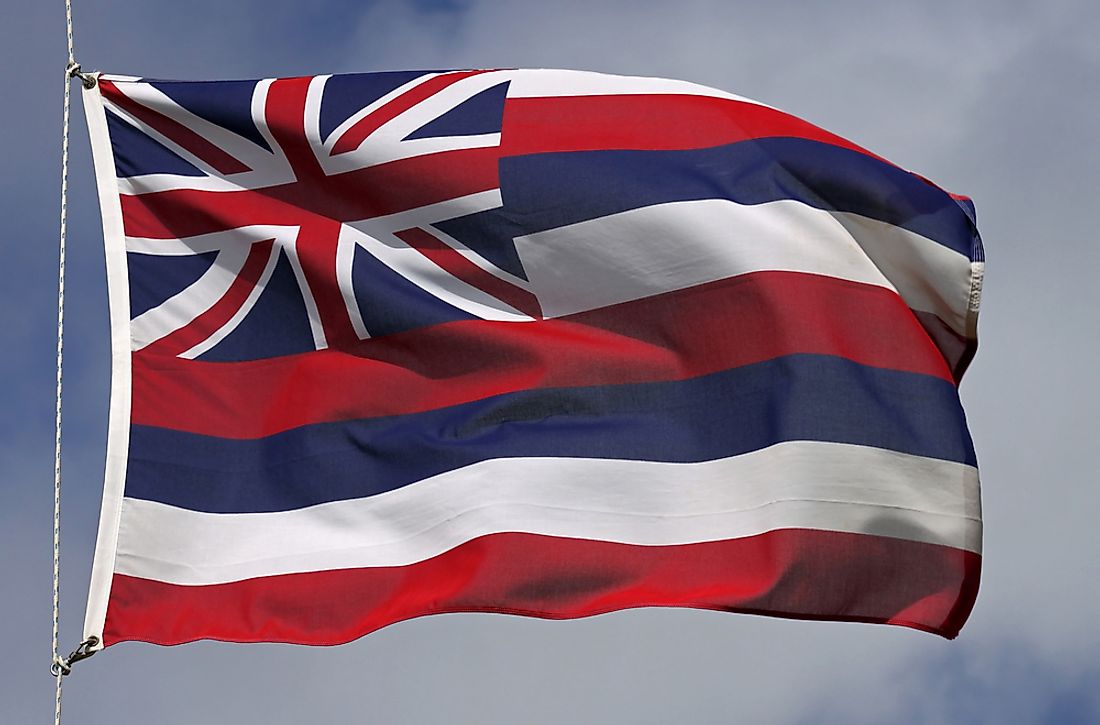Hawaii, the tropical paradise known for its stunning beaches, rich cultural heritage, and vibrant traditions, boasts a flag that encapsulates a profound history and symbolism. The flag of Hawaii, commonly referred to as the “Kanaka Maoli,” holds a deep significance rooted in the islands’ past, people, and journey towards statehood.
History of the Hawaii Flag
The origins of the Hawaii flag trace back to the early 19th century. In 1816, the King of Hawaii, Kamehameha I, sought a distinctive flag to represent his kingdom. The eventual design incorporated elements of British and American flags, signifying the strategic alliances and trade relationships established by the Hawaiian monarchy.
Symbolism and Design
The striking design of the Hawaii flag comprises eight horizontal stripes in alternating colors of white, red, and blue. At the top-left corner rests the Union Jack, a nod to Hawaii’s historical ties with British explorers and merchants. Adjacent to the Union Jack, a field of blue holds the flag of the United States in the upper right quadrant, symbolizing Hawaii’s later affiliation with America.
The eight stripes on the flag represent the main islands of Hawaii, each stripe representing a specific island: Hawai’i, O’ahu, Maui, Kaua’i, Moloka’i, Lana’i, Ni’ihau, and Kaho’olawe.
Evolution of the Flag
Over time, the flag’s appearance underwent changes. During the reign of King Kamehameha III, a distinctive version with the Union Jack and stripes was introduced. Later, in 1845, the design was modified to include the stripes that represented the individual islands. Finally, in 1898, the current flag, reflecting Hawaii’s relationship with the United States, was officially adopted.
Significance to Hawaiian Culture
The flag is more than a mere symbol; it holds immense cultural significance for the people of Hawaii. It represents resilience, cultural identity, and a deep-rooted connection to the land and its history. For many Hawaiians, the flag embodies a sense of pride, unity, and the spirit of aloha.
Contemporary Relevance
Even today, the Hawaii flag continues to serve as a prominent emblem across the islands. It flies proudly alongside the American flag, symbolizing Hawaii’s unique position as both an integral part of the United States and a distinct cultural entity.
Conclusion
In essence, the flag of Hawaii stands as a testament to the islands’ rich heritage, blending diverse influences into a unique and meaningful symbol. Its design and history reflect the complexities of Hawaii’s past, celebrating its unique position as a melting pot of cultures while honoring its indigenous roots.
From the days of the Hawaiian monarchy to its statehood within the United States, the flag has been a constant reminder of the islands’ journey—a journey marked by resilience, cultural fusion, and the enduring spirit of aloha.
The Hawaii flag, with its vibrant colors and layered symbolism, continues to wave proudly, reminding the world of the enduring legacy and beauty of the Hawaiian Islands.
